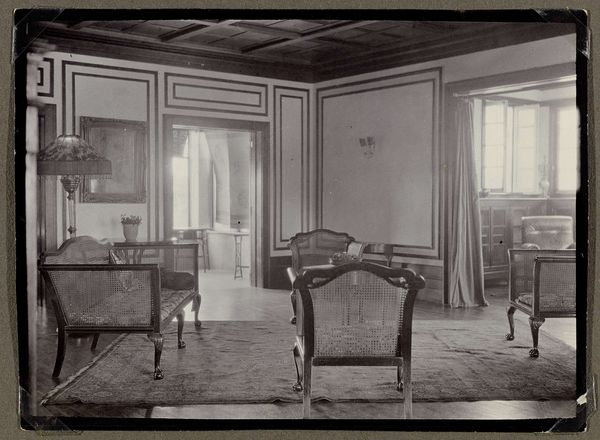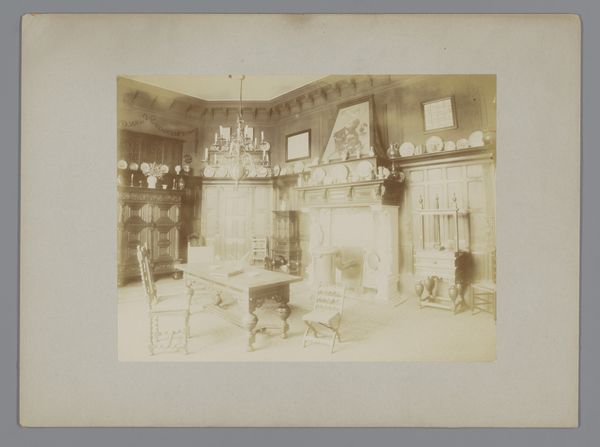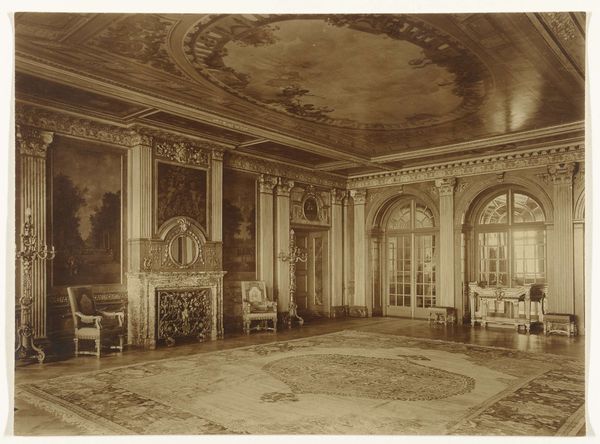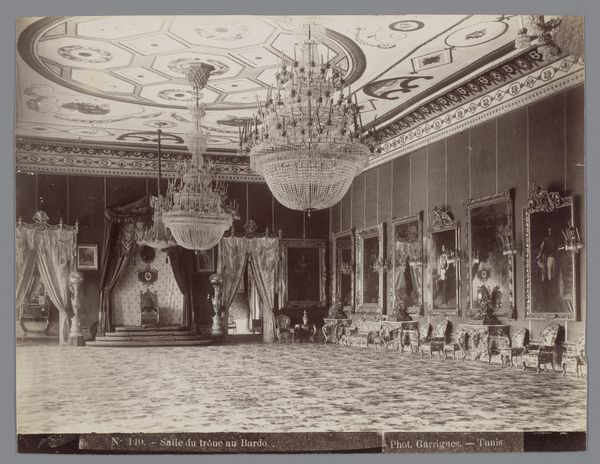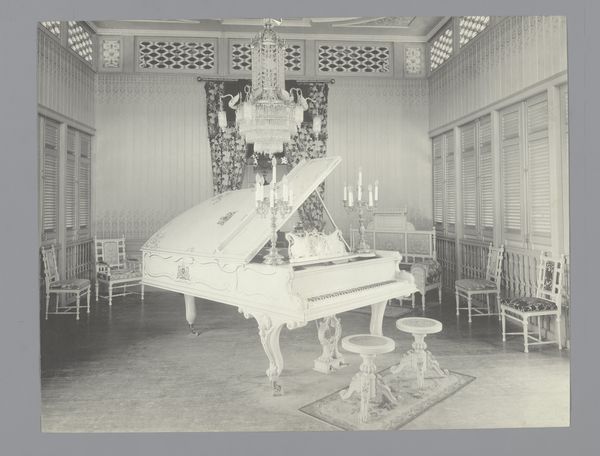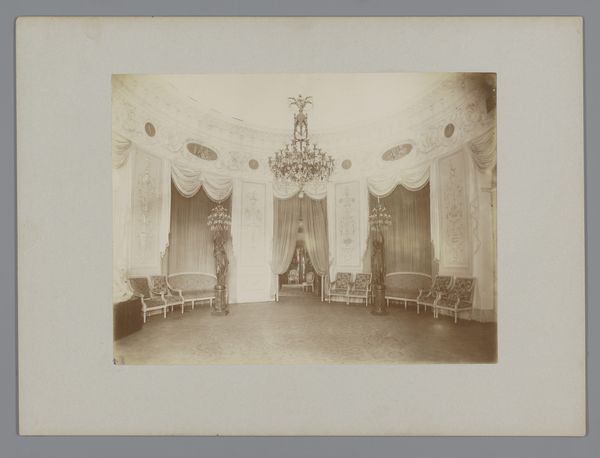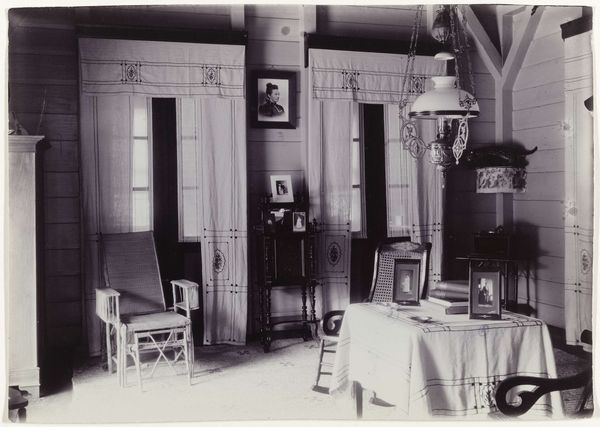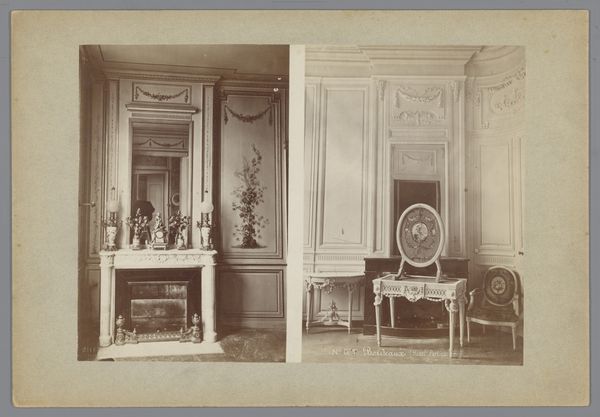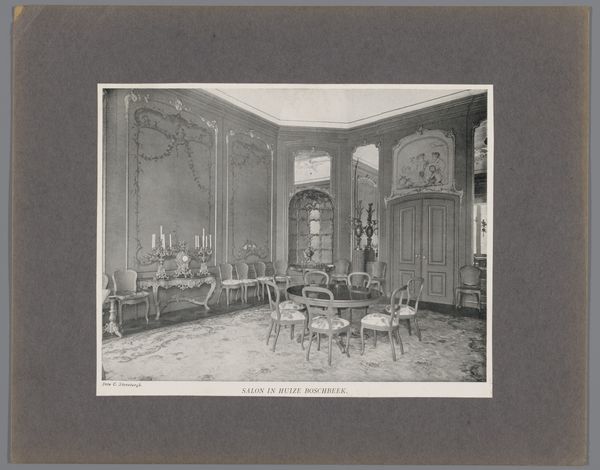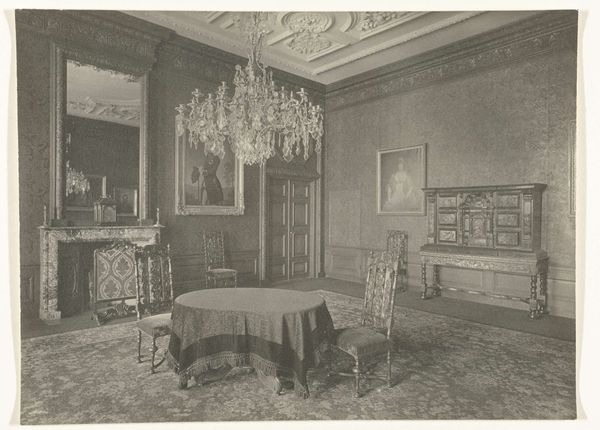
photography, gelatin-silver-print
#
16_19th-century
#
photography
#
orientalism
#
gelatin-silver-print
#
19th century
#
paper medium
Dimensions: height 211 mm, width 269 mm
Copyright: Rijks Museum: Open Domain
Curator: Let's discuss this photograph, a gelatin-silver print taken sometime between 1894 and 1895. It depicts a "Salon in het Gezirah Palace Hotel in Cairo" and comes to us via an anonymous photographer, revealing much about the Western gaze on the East at that time. Editor: Wow, immediately, I’m struck by the sheer density of detail! The photograph has this hazy, almost dreamlike quality to it. And there's something deeply unsettling about seeing this opulent, Western-influenced interior transplanted into Cairo. Curator: Precisely. We see evidence of Orientalism in the composition, with that very large sofa seemingly offering viewers the comforts of Europe superimposed onto an Egyptian backdrop, exoticized and consumed for European visitors. Editor: You can almost feel the weight of that chandelier! It’s all heavy ornamentation and formal posing, like everyone is consciously performing wealth and sophistication for the camera. I keep imagining ghosts flitting through. Curator: This performance speaks to the very real power dynamics inherent in colonialism, and how they were reflected through not just photographs, but through spatial arrangement and interior decoration. The salon becomes a stage upon which these dynamics unfold. Editor: Right! I’m also stuck on how eerily depopulated the image is, there's an alienating feel, it's staged like no one lives there... Curator: And we might discuss this in the context of labor—who served tea here? Who swept these floors and cared for these plants? Those people are notably absent from the frame, rendering this scene less about the space itself and more about a Western fantasy constructed and reinforced through their absence. Editor: That's right. It is ghostly and silent. As though it preserves and broadcasts privilege as emptiness and absence. You look closely and it is a fascinating photograph of Western hegemony, with an unsettling undercurrent... Curator: Absolutely. It’s a testament to the power of images not just to document but to shape and reinforce narratives, making visual arguments that still resonate with discussions around power, privilege, and representation today. Editor: Well said. Seeing it this way offers up more than simply a historic rendering. It becomes a stark commentary on the gaze and who has permission to even be included in the view. Food for thought!
Comments
No comments
Be the first to comment and join the conversation on the ultimate creative platform.
